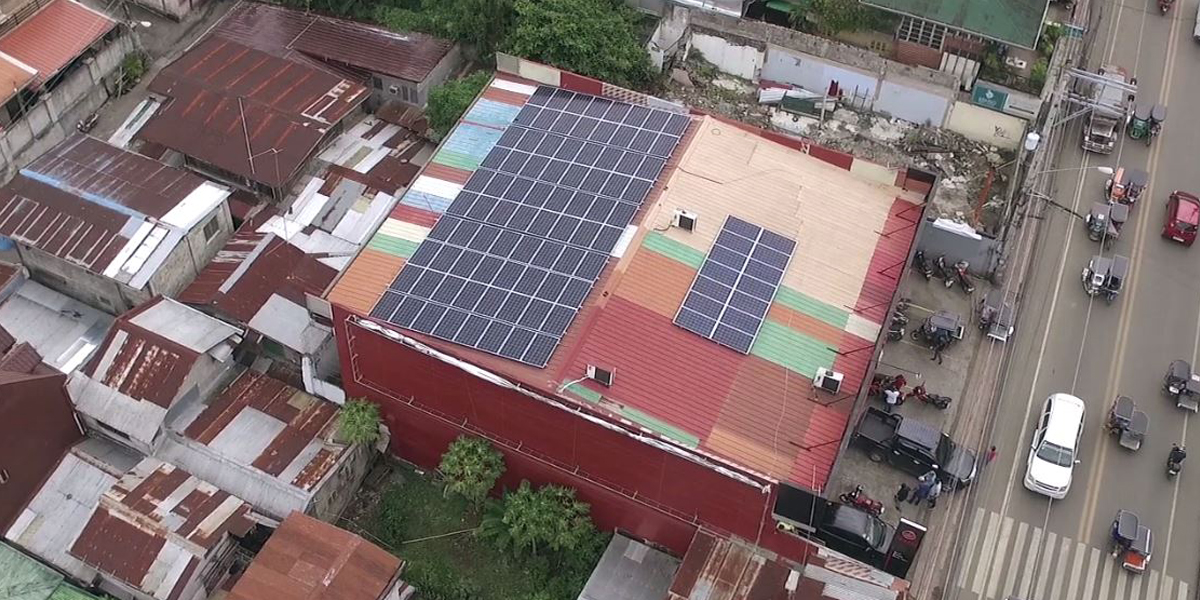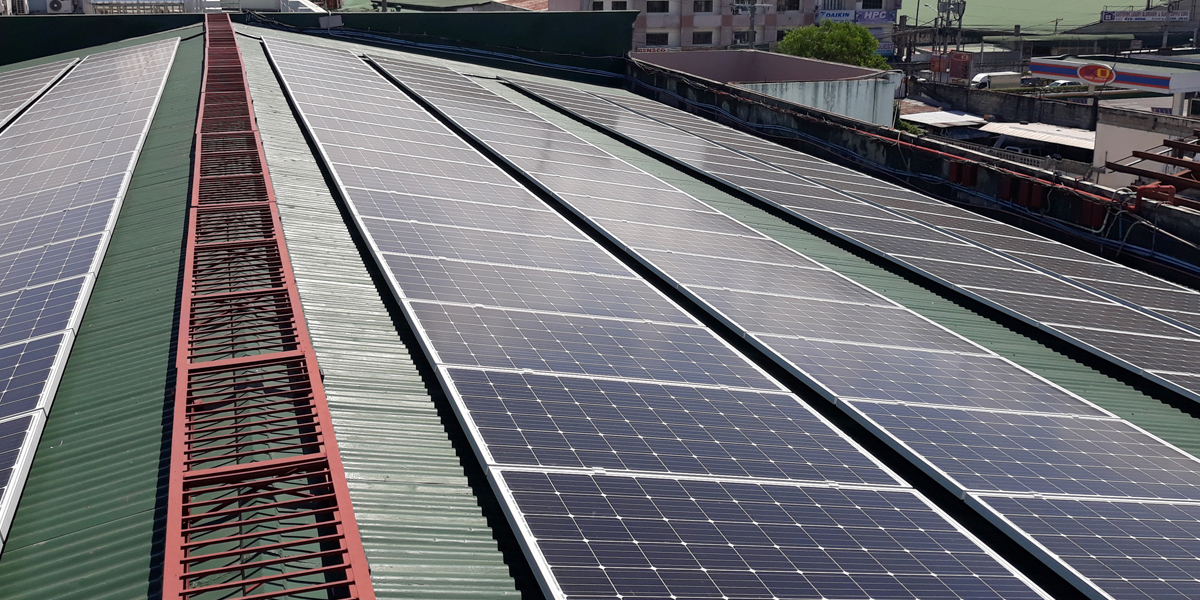WeGen Philippines offers solutions to help make electricity affordably available to all Filipinos through solar rooftop installations in small to big communities. As a next-generation energy tech business, it specializes in rapidly advancing renewable energy, battery storage, and software technologies to develop energy solutions for different applications. The Pinoy Builders team had the honor to connect with WeGen Philippines to share their vision of a better, brighter Philippines.
Photo Courtesy: WeGen
Strength in numbers
At the forum on “Propelling Renewable Energy Against Climate Change ” organized by The Manila Times, WeGen president Mr. Charlie Ayco discussed pursuing a renewable energy transition through a “complementary” approach, instead of working towards a “centralized” renewable energy generation which will not necessarily lower the cost of electricity in the country. Mr. Ayco argued that the country should consider a “swarm” strategy, rather than an exclusive focus on the conventional model of power generation and distribution; think of building hundreds of thousands of small solar installations, integrated into one system through net metering or energy aggregation, compared to a few, large, centralized generation facilities.
As a company we have to ask ourselves key questions because we are inspired by the encyclical of Pope Francis Laudato Si’ which is to care for our common home. We look at the two scenarios. Are we going to go on large solar farms or rooftop solar? Which one will respond better the challenges of energy sustainability, reliability and affordability?” Mr. Ayco pointed out.
Photo Courtesy: WeGen
And the second question that we asked is, which of the two approaches will give better results in terms of shared prosperity with renewable energy. When we say shared prosperity, it’s not only us, as the company, getting the benefits of the business, but rather our customers,” he added.
Imagine having thousands of individual houses with solar panels serving as small electricity generators: more small power sources mean lesser chances of large-scale brownouts since there is no concentration risk, overall resulting in better reliability of the power system. Additionally, if individual houses or buildings are able to supply their own electricity needs, some of them may have excess electricity from their actual usage. Excess electricity can be gathered or aggregated and sold to the local grid, distributed to local consumers, or to the national grid for areas that badly need it. This approach also addresses the problem of transmission and distribution of power supply in secluded areas. Moreover, setting up takes less than a day for installing and connecting a house-scale solar power system; a couple of weeks for a larger installation like on malls or factory roofs.
Challenges in achieving the goal
The deployment of “swarm” type systems on a large scale isn’t that easy with the number of challenges that need to be overcome. Mr. Ayco discussed some of these challenges such as regulatory and financial obstacles. He also cited some policies that somehow limit the use of net metering, problems in terms of obtaining permits, and the difficulty to pay the initial cost for the home or building owners who would like to have a solar system because of the unavailability of credit.
Photo Courtesy: WeGen
Moreover, those persistent misconceptions among consumers served as a challenge for his proposition, and even to some of the policymakers and regulators –that solar energy is inefficient, unreliable, and only provides energy on sunny days. While it may be true in the past, the rapid evolution of technology contributed to the advancement of solar energy. This, and the developments in battery technology and energy storage, have put solar energy nearly essentially equal with other conventional forms of power.
From Consumers to “Prosumers”
Mr. Ayco’s recommendations for these obstacles is for the political will of the government leaders to have the same goal and proper information dissemination to the public that there is a clean, cost-effective, and reliable alternative to the high price and inconsistent electricity supply. Moreover, according to Mr. Ayco, other critical factors that we also have to consider is to have a long-term investment in terms of reliable performance in technology; access for small, long-term loans particularly for residential and small business owners; and strong customer support which covers having community-based electricians and solar PV installers and establishing a network of outlets and distribution centers where people can buy high-quality solar PV components.
Photo Courtesy: WeGen
Most importantly, Mr. Ayco pointed out that convincing at least 4 million out of 22.4 million units of houses in the country to shift and put up 5 kilowatts of solar rooftops will remove a total of 20 gigawatts of power from the grid. It would mean reducing in millions the number of investments needed to upgrade or modernize the grid. And these 4 million power consumers will shift to being “prosumers” as they become producers and consumers of electricity. This will also tremendously bring down the cost of electricity at the consumer level (residential, commercial, industrial) and help the country become more competitive. For years, the price of electricity in the Philippines is the second-highest in Asia.
Mr. Ayco also noted on the forum that their aim is to have shared prosperity wherein not only the company benefits but rather the customers; shared prosperity on bringing down the cost of electricity at the customer level. This is no longer a dream but a reality experienced by those who already installed solar PV systems primarily for their own self-consumption.
CITATIONS:
Gomez, E. J. (2021, July 1). WeGen: Solar rooftops also a solution for energy. The Manila Times. https://www.manilatimes.net/2021/07/01/business/top-business/wegen-solar-rooftops-also-a-solution-for-energy/1805302?fbclid=IwAR2j66RKEBCvFscGuQJ6SSj5kcNHPdzWBGDvODk6K4j-i2SgTuN1MObMZQI
Kritz, B. (2021, July 4). PH energy sector is terrified of renewables. The Manila Times. https://www.manilatimes.net/2021/07/04/opinion/columns/ph-energy-sector-is-terrified-of-renewables/1805659?fbclid=IwAR2fwVKQe4uOQYLk-nWW3dXC8i8YW0h_cYW2JRUg-cx13C452-LcBAChqh4
A panel on every roof. (2021, July 8). The Manila Times. https://www.manilatimes.net/2021/07/08/opinion/editorial/a-panel-on-every-roof/1806133?fbclid=IwAR2Rj1YFsRLUVdFQ4m5Oa5eh66zPrm0n7meqabjWg1YA6WDhSX2NTQLlDlQ
![]()







